I found some bits… ![]()
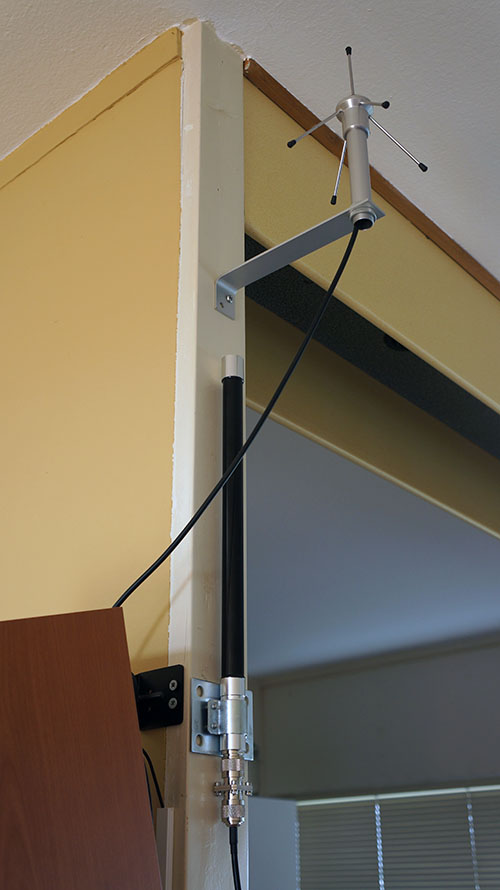
will try to test (again) today (weekend ![]() ), last time all the graphs went wrong
), last time all the graphs went wrong
I found some bits… ![]()

will try to test (again) today (weekend ![]() ), last time all the graphs went wrong
), last time all the graphs went wrong
Just installing the Siro GP868 C this week, very well built piece of kit
@dicktonyboy. Just built an 868 MHz colinear antenna to compare with the modelling you posted. Get the exact same shape VSWR curve as per the simulation. Min VSWR is 2.1 but instead of it being around 860-870MHz mine has a minima at 840 MHz. Followed the Tips and could not change the resonant frequency by changing the size of the “last loop”. By that I assume the top loop. Going to see if the “last loop” is the bottom loop which I expect will change the resonant frequency. Just going to solder a “shorting link” to bypass some of the loop and adjust its position to tune to the required frequency.
Hi All,
As winter sets in in Australia I have been noticing my receive levels going down, from RSSI’s of 76 to now 88, very confusing. I pulled down my colinear 915Mhz antenna and found it was full of water. As you will notice from the picture the antenna is housed in a high pressure PVC pipe with caps at either end. I cant work out where the water got in.
How do others seal their antennas? What is best practice?
Chris
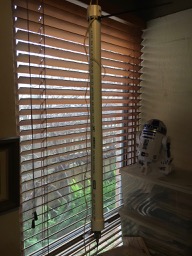
@cdann, are the pvc pipe caps solvent welded to the tube or just press fitted? Also, how does the cable enter, via a compression gland? Are there any other penetrations, eg for radials etc. I always recommend using self vulcanising / self amalgamating tape on antenna connectors to form a water tight seal. You can use the same tape to seal between the PVC pipe and the antenna cable where the cable enters the tube. Bunnings sell this as a Silicon Self-Fusing tape. If you post some close up photos of the penetrations into the PVC tube, we may be able to provide more detailed answer.
Test results are in. Obtained a VSWR of 1.2:1 and was able to tune the antenna very easily. Its a coaxial dipole consisting of quarter wavelength at the bottom, followed by 8 half wavelength sections stacked above. Built from RG58CU I assumed a Velocity Factor of 0.66. Tuned by trimming the top half wavelength piece of coax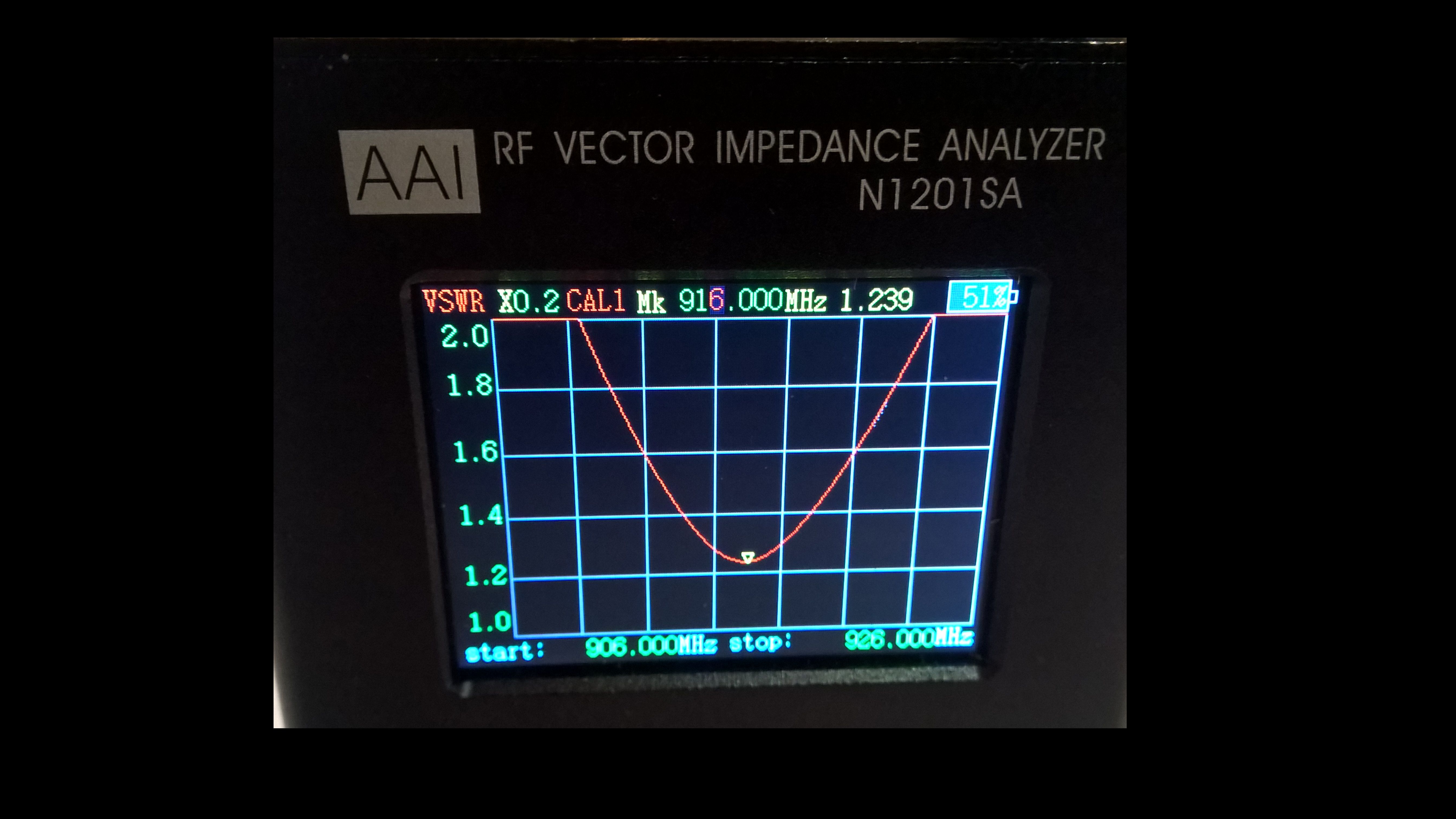 Next step is to check its gain but I expect it will be 6 or so dBi.
Next step is to check its gain but I expect it will be 6 or so dBi.
Did you also use radials as groundplane? I remember somebody else built a similar antenna but with 4 radials.
Hi Tony,
Thanks for your rapid response. No due to the ongoing changes I have not welded anything at this point. The only penetration is for the n-type connector located on the bottom of the antenna. It is a snug fit. It did not seem necessary to do more than press fit, clearly I was wrong. I have attached some closeup pictures. Thanks for your advise on silicon tape.
Chris
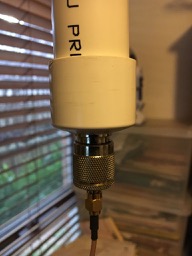
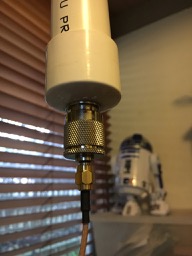
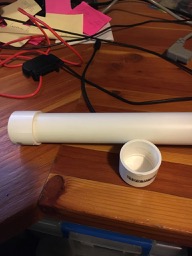
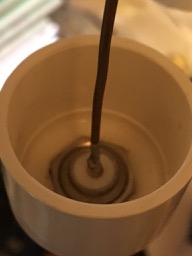
its common for water to enter a Waterproof enclosure, even one with rubber seals. As the enclosure heats and cools the air pressure inside raises and lowers. If the seal is not strong enough the drop in air pressure will suck air past the seal and any water sitting on the seal will be sucked in. it effectively pumps water into the enclosure. I suspect water sitting on the bottom fitting (which is not glued) is being sucked inside the tube. You could solvent weld this joint and leave the top one loose. There is another option and that’s to glue the top cap and put a pair of threaded fittings between the bottom of the pipe and the bottom cap, this would give you access to the bottom of the pipe again. Just seal the threads with plumbers tape. I would also apply self sealing tape around the bottom of the pipe and wind it all the way over the connectors all the way to the coax cable. I’d also suggest you don’t use small coax outside as its hard to apply tape around such a small diameter. Use a larger diameter coax with N-Type connectors and make the N-Type to SMA conversion at the back of the gateway board with a short (100mm tail) Large diameter coax will also have lower losses.
Hope this helps
Yes, 4 radials at 1/4 wavelength. since there is no dielectric on the radials the velocity factor = 1. they are also horizontal, no need to downtilt at 45 degrees.
Any building process photo?
I’m very curious … let us know if you like it or not 
what I’ve seen from pictures its a pretty little gp antenna
Would not even trying to make the bottom waterproof, but in stead make 2 small holes so water can drain work? Or would that result in condensation along the inside of the pipe at times?
@kersing, you are correct, a couple of holes in an enclosure eliminates the root cause which is the pressure difference. Have done this myself as it allows anything to drain away. Just need to evaluate if the items inside are subject to corrosion with a bit of moisture. There won’t be standing water but there will be higher humidity. What is really important is to seal the coax connectors as the dielectric is often gas filled plastic and the plastic may be hydroscopic and adsorb moisture as well as the gas filled holes can accumulate moisture. Have had experience on commercial radio sites of pulling the RF connector off the end of a coax and water runs out  No wonder the radios performance was affected!!
No wonder the radios performance was affected!!
See Liquid Electrical Tape: The BIG and SMALL ANTENNA topic part 1
It won’t help for an enclosure but it will help seal cable connectors.
Well done - it is the top loop and that is a fairly sensitive dimension. Well done with the VSWR. The key here is to design a good antenna that is simple to reproduce an note sensitive to damage. Thick wire provides boarder band width but you can detect the frustration in my voice here > https://youtu.be/-H-W76OMkyY?t=1m24s
@dicktonyboy, i’m drawn to the simplicity of the Fabien’s design but its clearly difficult to reproduce due to the sensitivity of forming the same diameter and shape loops. Also the best VSWR is 2:1. Had much better results with a Coaxial colinear where I achieved VSWR of 1.2:1 and could easily tune with a by trimming the top section. The downside is the time it takes to cut and trim all the pieces of coax (unless I buy a $16,000 coax stripping machine  ) Not sure which way to go forward. Could try and build a jig to bend the copper in Fabien’s design to achieve more consistent results. Hmmmm.
) Not sure which way to go forward. Could try and build a jig to bend the copper in Fabien’s design to achieve more consistent results. Hmmmm.
This 15dBi antenna that I tested (see my post I replied on). The seller agreed to refund almost al the money. Apparently he knew this antenna was a scam.
I sent him this message:
The gain specification for this antenna is not real!
The VSWR of this antenna is good so the antenna is not defective as measured with an N1201SA antenna analyzer.
The gain of this expensive antenna is even less than a cheap three dollar antenna (See the three pictures of the measurement, reference transmitter in the black car).
The average RSSI measurement for the 15dBi glide base antenna was -92.9 dBm. The average RSSI measurement for the cheap antenna was -91.7 dBm.
So a simple calculation shows that the simple antenna has 1.2 dB more gain than the antenna i bought.
The specified gain of 15 dBi is impossible because the cheap antenna has a theoretical gain of 3dBi.
Please refund because returning the antenna is too expensive due to its size and weight.
and these pictures:
There are several types of this antenna on Ebay and Aliexpress. Soimetimes accompanied by fake pictures of a manufacturing site and expensive testequipment. I found the same type with different gain and length. 6dBi, 8dBi, 12dBi, 14dBi and 15dBi. I expect they are all really bad antenna’s though I have only tested one of them. I can only say that you must not believe those fantasized gain figures and fantasized manufacturing companies, or you will , very likely, get scammed.
I found the software on github GitHub - SensorsIot/Antenna-Tester: LoRa Antenna Tester
I can confirm the issue. Recently I’ve also measured RL and RSSI for “12 dBi antenna” from AliEx - bandwidth is fine, but gain is horrible…
In progress of discussing with seller for refund on this order.
A post was merged into an existing topic: The BIG and SMALL ANTENNA topic part 2